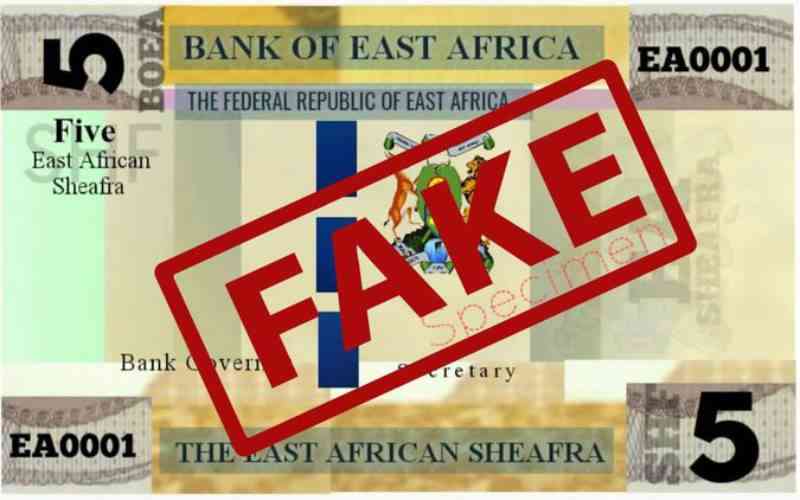
The East African Community (EAC) has denied the existence of a new currency for the region after a fake account on X claimed to have unveiled it.
EAC Secretariat said on Monday, March 4, that the process of achieving a single currency was still ongoing and urged the public to ignore any rumours on social media.
The fake account, which had a grey checkmark indicating that it was a government or multilateral organisation, posted on Saturday the image of a 5 SHEAFRA note, saying "The East African Sheafra of SHF.5 Currency Note of fuv5 has finally Landed."
The account said that the currency would boost the regional economy and that one SHEAFRA would be worth $0.76.
It then repeatedly posted the note with different captions, some of which claimed that the currency was "God Chosen" and that the public should "give God a chance to lead."
However, the EAC Secretariat clarified that there was no such currency and that the account had no affiliation with the regional bloc.
"The EAC Secretariat wishes to inform all our stakeholders that the Partner States' journey to a single currency is still a work in progress. Kindly ignore any rumours circulating in social media on the unveiling of new banknotes for the region," the EAC said in a statement on X.
The hoax comes as X has introduced additional gold and grey checkmarks for verified organisations and government-affiliated accounts.
X says that the changes to verification are meant to "reduce fraudulent accounts and bots".
A gold checkmark shows that the account is an official organisation accounts through verified organisations.
The grey checkmark shows that the account represents a government/multilateral organisation or a government/multilateral official.
The EAC partner states are harmonising key policies and setting up the necessary institutions to achieve a single currency for the region by 2024 as outlined in the EAC Monetary Union Protocol.
The protocol envisages the establishment of the East African Monetary Institute (EAMI) by 2022, which would later become the East African Central Bank that would issue a single currency.
The main benefits of a monetary union are the reduction in transaction costs, savings in international reserves, the elimination of exchange rate risk and region-wide price harmonisation.
On the other hand, the costs of a monetary union are related to the loss of sovereignty over monetary and exchange rate policy, especially in the case of asymmetric shocks that make the same monetary policy unsuitable for all member countries of a monetary union.
In a monetary union, member countries lose unilateral control over instruments (monetary policy instruments and exchange rate policy) that may be vital in dealing with country-specific macroeconomic shocks.
A new currency will be attractive if it is more stable in terms of better maintaining its purchasing power than the currencies it replaces.
This may come from a strong institutional framework within the monetary union, achieving more discipline over fiscal policies and protecting the regional central bank from pressures to provide monetary financing.

